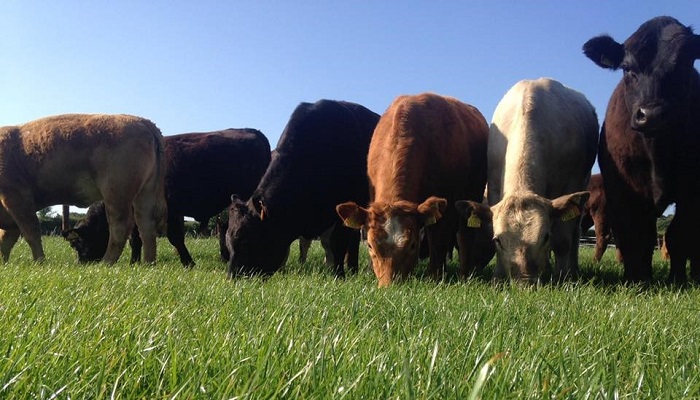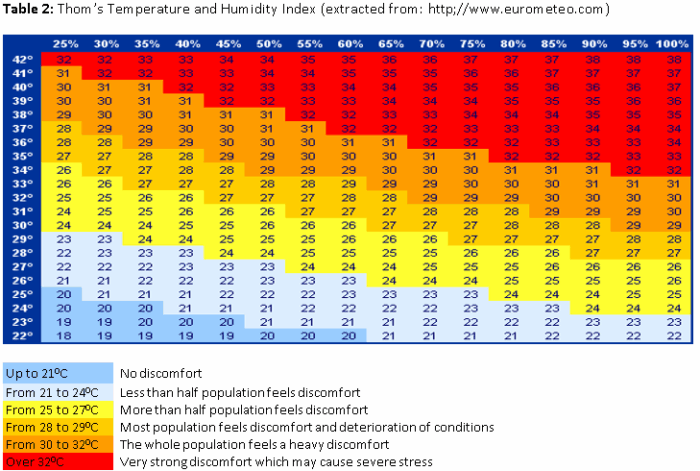Heat stress in cattle

With warmer temperatures forecast, now's a great time to refresh on heat stress in cattle, and the management tasks needed to prevent it becoming an issue.
Compared to other animals cattle cannot dissipate their heat load very well. Cattle do not sweat effectively and rely on respiration to cool down. Dr. Bernadette Earley, Teagasc Grange Researcher, has previously produced the ‘Heat Stress in Cattle Factsheet’ to help farmers manage cattle on these hot days. Read it here:
View Heat Stress in Cattle Factsheet (PDF) here
How cattle lose heat

Photo above: Animals produce heat from their metabolism and this heat can be lost to the environment by several routes:
- Convection: Transfer by flow of air
- Radiation; Transfer by emission of heat
- Conduction; Transmission by contact with another surface
- Evaporation; Transfer by evaporation of water e.g. panting or sweating
Cattle do not sweat effectively and rely on respiration to cool down. A compounding factor on top of climatic conditions is the fermentation process within the rumen which generates additional heat that cattle need to dissipate. Since cattle do not dissipate heat effectively they accumulate a heat load during the day and dissipate heat at night when it is cooler.
The facts
- Heavy cattle cannot handle heat stress compared to lighter weight cattle.
- Increased fat deposition prevents cattle from regulating their heat effectively.
- Solar radiation is a critical component that can lead to death loss from heat stress.
- Typically, more black hided cattle die during heat waves then other hide colours. Since cattle rely on respiration as a method to manage heat – respiratory function is important (Figure 1).
- Cattle that had severe respiratory disease early in the feeding period will have decreased ability to regulate their heat load.
- Typically, more black hided cattle die during heat waves then other hide colours
Managing heat stress
- Cattle water normal requirements (Table 1). The water requirements of cattle increases during heat stress. Cattle lose water from increased respiration and perspiration (see figure 1). Additionally, consumption of water is the quickest method for cattle to reduce their core body temperature. Therefore, water consumption will be greater than typical metabolic requirements.
- Flies cause cattle to bunch up which decreases cooling. Minimizing breeding areas for flies and applying insecticides to decrease fly populations prior to heat stress times is worthwhile.
- During times of increased heat stress cattle should be observed closely to identify if additional strategies need to be implemented.
- As heat stress increases cattle will begin to salivate and respiration rates will increase. Eventually, cattle will begin to group together. In severe heat stress cattle will be open mouth breathing with a laboured effort.
Did you know?
- Coat colour and type– cattle with lighter coat colour tend to be more tolerant of heat.
- Body condition– heavier cattle tend to be more susceptible.
- Adaptation– cattle will adapt to heat provided the temperature change is gradual.
- Health– cattle with a prevailing health condition are less able to cope with changes in temperature.
Grazing management
- Rotate cattle in the evening rather than the morning. The assumption is that the grass will be consumed in the evening and the ‘heat of fermentation’ or digestion is mostly dissipated by mid-morning, thereby reducing the heat load produced by the animal.
- Graze paddocks that allow access to temporary shade or trees during the heat of the day.
Table 1: Approximate total daily water intake of cattle at 4°, 14° and 21° C
| Animal type | Weight (kg) | Water intake (litres) | ||
| 4° | 14° | 21° | ||
| Steers/heifers/bulls | 180 | 15 | 19 | 22 |
| Steers/heifers/bulls | 270 | 20 | 25 | 30 |
| Steers/heifers/bulls | 360 | 23 | 30 | 35 |
| Steers/heifers/bulls | 4501 | 30 | 37 | 44 |
| Steers/heifers/bulls | 5401 | 35 | 42 | 50 |
| Steers/heifers/bulls | 6401 | 40 | 47 | 56 |
| Suckler cows – lactating | 43 | 55 | 64 | |
| Suckler cows – non lactating | 23 | 25 | 33 | |
| Mature bulls | 33 | 41 | 48 | |
1Estimated. Source: National Research Council 1996
In hot weather, cattle requirements for water increase 1.5 to 2.0 times their normal requirements. Check water sources and ensure adequate access and availability for cattle.
The temperature humidity index
Temperature is the most important environmental factor affecting the physiological functions of cattle. Cattle have a thermal neutral zone (optimal experience of comfort in relation to environmental temperature), between the lower critical temperature (LCT) and the upper critical temperature (UCT) (Table 2). When cattle are within this thermo-neutral zone, they only have to expend minimal energy in order to maintain their body temperature and therefore, maintain performance. Once the ambient temperature goes above or below the thermo-neutral zone, the animal will be required to expend metabolic energy on heat production or heat dissipation therefore reducing the amount of energy available for other bodily functions. The LCT will vary depending on the condition of the animal’s coat, as can be seen in Table 2. The UCT varies depending on humidity levels.
The temperature humidity index (THI), shown in Table 2, has been widely used as an indicator of thermal stress in livestock.

